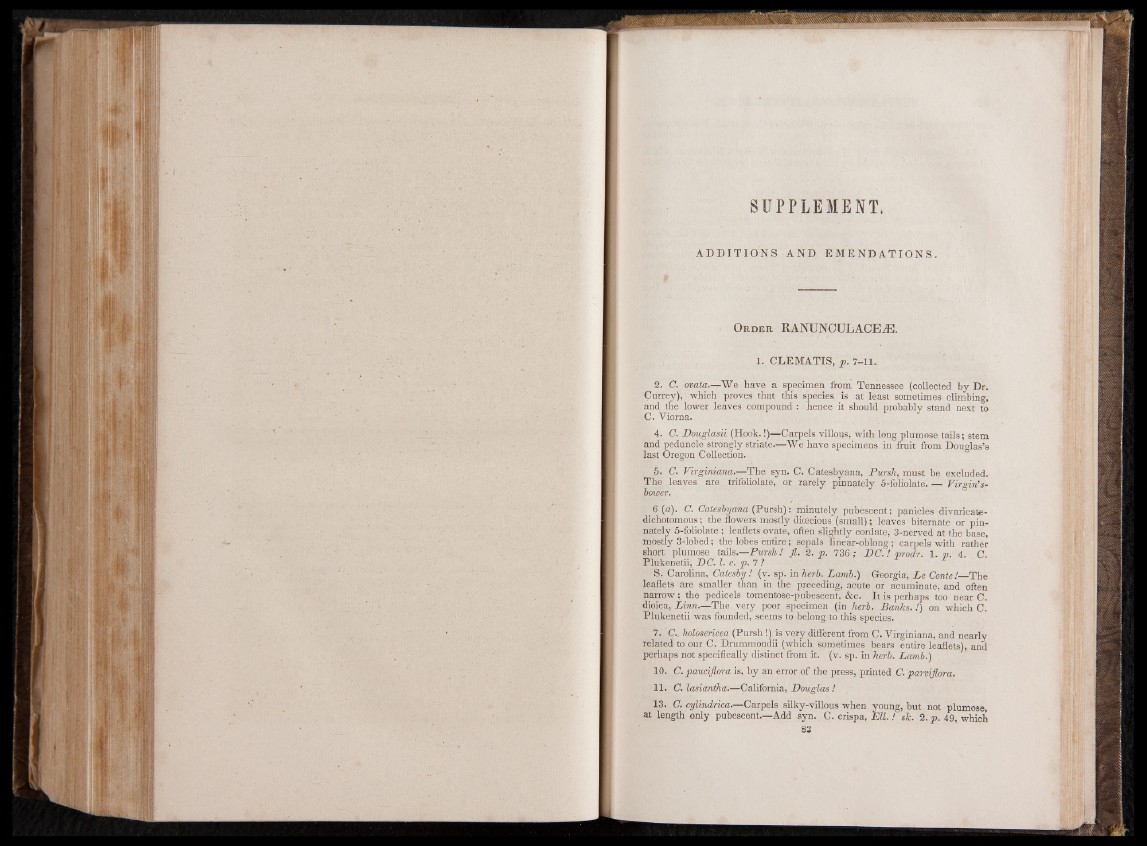
'
SUPPLEMENT,
A D D I T I O N S A N D E M E N D A T I O N S .
Or d e r RANUNGULACEjE.
1 CLEMATIS, p. 7-11..
2. C. ovata.—We have a specimen from Tennessee (collected by Dr.
Currey), which proves that this species is at least sometimes climbing,
and the lower leaves compound : hence it should probably stand next to
C. Viorna.
4. C. Douglasii (Hook.!)—Carpels villous, with long plumose tails; stem
and peduncle strongly striate.—We have specimens in fruit from Douglas’s
last Oregon Collection.
5. C. Virginiana.—The syn. C. Catesbyana, Pursh, must be excluded.
The .leaves are trifoliolate, or rarely pinnately 5-foIiolate.— Virgin's-
bower.
6 (a ). C. Catesbyana (Pursh): minutely pubescent; panicles divaricate-
dichotomous ; the flowers mostly dioecious (small); leaves biternate or pin-
nately 5-foliolate ; leaflets ovate, often slightly cordate, 3-nerved at the base,
mostly 3-lobed; the lobes entire; sepals linear-oblong; carpels with rather
short plumose tails.—Pursh! fi. 2. p. 7 3 6 ; P C .! prodr. 1. p. 4. C.
Plukenetii, DC. 1. c. p. 7?
S. Carolina, Catesby! (v. sp. in herb. Lamb.) Georgia, Le Conte!—The
leaflets are smaller than in the preceding, acute or acuminate, and often
narrow; the pedicels tomentose-pubescent, &c. It is perhaps too near C.
dioica, Linn.—The very poor specimen (in herb. Banks. !) on which C.
Plukenetii was founded, seems to belong to this species.
7. C-. holoserieea (Pursh !) is very different from C. Virginiana, and nearly
related to our C. Drummondii (which sometimes bears entire leaflets), and
perhaps not specifically distinct from it. (v. sp. in herb. Lamb.)
10. C.pauciflora is, by an error of .the press, printed C. parviflora.
11. C. lasiantha.—California, Douglas !
13. C. cylindrica.—Carpels silky-villous when young, but not plumose,
at length only pubescent.—Add syn. C. crispa, Ell. ! sk. 2. p. 49, which